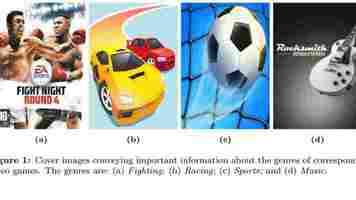England and Wales finally get contact-tracing app after months of delays — bit shit, but it’ll do
After months of delays , U-turns , technical issues , and criticism from privacy campaigners, the UK government has finally launched its contact-tracing app in England and Wales.

The revamped NHS COVID-19 app uses Bluetooth to track the time people spend near other users and the distance between them. When an individual falls ill, they can report it in the app, which then alerts anyone who’s been close to them. If the system’s algorithm calculates that their contact was high-risk, they’ll be told to self-isolate.
They can also use the app to access local risk alerts, QR check-in at venues, a symptom checker, and test booking.
Health and Social Care Secretary Matt Hancock urged everyone in the UK who’s over 16 to now download the app from Google Play and the App Store :
In a press release published today, the Department of Health and Social Care stressed the app was developed “with user privacy and data security at its heart.”
To protect personal data, the system generates a random ID for every user’s smartphone that’s exchanged with other handsets via Bluetooth rather than by GPS. These IDs then regenerate frequently to add further privacy. In addition, the app doesn’t hold personal information other than the first half of each user’s postcode, which is used for local alerts, and no personal data will be shared with the government or NHS.
Security concerns
But critics fear the use of QR codes is neither private nor secure. Attila Tomaschek, Digital Privacy Expert at digital advocacy group ProPrivacy, said that scammers can easily fake codes to lead users to malicious websites that install malware on their devices, and that the Chinese government’had used the codes to track residents through its contact-tracing app
“Not only can QR code check-ins paint an intricately detailed picture of a user’s location history (precisely what proximity tracking via Bluetooth is designed to prevent), but it can also be an extremely attractive attack vector for scammers to exploit,” he said.
These shortcomings led ProPrivacy to give the UK contact-tracing app a privacy score of 4/10. That’s certainly not great but it’s pretty average in the rankings. Switzerland’s SwissCovid-App received the sole 10/10 score, while a raft of apps including those used in China, India, and Russia were given zeroes.
However, other tech experts have praised the app’s security measures. Rachel Coldicutt, the former CEO of “responsible tech” think tank Doteveryone, said she was satisfied with the decentralized, anonymized way in which the system handles data.
Further support came from Adam Wagner, a human rights barrister at Doughty Street Chambers, who noted that anyone who doesn’t use the QR codes at venues will have to give their personal details instead.
Contact-tracing’s potential
There are also concerns that the app produces false-positive results that will lead people to self-isolate who aren’t at risk and that public mistrust over the government‘s handling of test and trace will make uptake slow.
In addition, people with some of the latest Huawei handsets or the iPhone 6 and earlier versions of Apple smartphones won’t be able to download the app, cutting out a large number of users — particularly older people and those on low incomes. Only about one in 10 people installed the app during a recent trial in Newham, one of London’s most deprived and ethnically diverse boroughs.
The government will hope that a TV advertising campaign with the strapline “Protect your loved ones. Get the app” and the agreement of major network operators not to charge people for using the app will boost the uptake.
Even if they attract the millions of users that the app needs to make it useful, the app is heavily reliant on an effective testing program, which leaked documents suggest is currently in chaos. But the app does look like a big improvement on its predecessors. There’s no legal requirement to use it, but I’ve downloaded it — and hope others do the same.
So you’re interested in AI? Then join our online event, TNW2020 , where you’ll hear how artificial intelligence is transforming industries and businesses.
Researchers taught AI how to judge a video game by its cover
Have you ever seen the promo art or box cover for a video game and thought “what the hell is this even about?” Well, wonder no more. A pair of researchers have combined cutting-edge image recognition and natural language processing to create an AI system for video game genre classification.

Yuhang Jiang and Lukun Zheng, in their recently published pre-print research paper “Deep learning for video game genre classification,” describe the creation of a large training database and its use in developing a novel classification system.
Per the authors:
Once compiled, the researchers used the database to train text and image recognition models. The team then tested each model to determine which one worked best. Unsurprisingly, they found the text-based models fared better than image-based ones and that hybrid models using both did best.
[
Quick take: Video game genre classification is a difficult problem for AI researchers. Unlike music or movies, video games contain an extra dimension of definition, that being that they are an interactive form of entertainment.
The ability to accurately automate game classification could be a boon for the industry. Such a system could make it easier for players to find games they might like and for storefronts to properly organize their catalogs. But perhaps most importantly, it’s easy to imagine this classification system integrating with recommendation algorithms and other AI-based data-gathering-and-execution services.
Read the whole paper here for more information.
How AI weeds the spam out of our inboxes
Of more than 300 billion emails sent every day, at least half are spam. Email providers have the huge task of filtering out spam and making sure their users receive the messages that matter.

Spam detection is messy. The line between spam and non-spam messages is fuzzy, and the criteria change over time. From various efforts to automate spam detection, machine learning has so far proven to be the most effective and favored approach by email providers. Although we still see spammy emails, a quick look at the junk folder will show how much spam gets weeded out of our inboxes every day thanks to machine learning algorithms.
How does machine learning determine which emails are spam and which are not? Here’s an overview of how machine learning-based spam detection works.
The challenge
Spam email comes in different flavors. Many are just annoying messages aiming to draw attention to a cause or spread false information. Some of them are phishing emails with the intent of luring the recipient into clicking on a malicious link or downloading a malware.
The one thing they have in common is that they are irrelevant to the needs of the recipient. A spam-detector algorithm must find a way to filter out spam while and at the same time avoid flagging authentic messages that users want to see in their inbox. And it must do it in a way that can match evolving trends such as panic caused from pandemics, election news, sudden interest in cryptocurrencies, and others.
Static rules can help. For instance, too many BCC recipients, very short body text, and all caps subjects are some of the hallmarks of spam emails. Likewise, some sender domains and email addresses can be associated with spam. But for the most part, spam detection mainly relies on analyzing the content of the message.
Naïve Bayes machine learning
Machine learning algorithms use statistical models to classify data. In the case of spam detection, a trained machine learning model must be able to determine whether the sequence of words found in an email are closer to those found in spam emails or safe ones.
Different machine learning algorithms can detect spam, but one that has gained appeal is the “naïve Bayes” algorithm. As the name implies, naïve Bayes is based on “ Bayes’ theorem ,” which describes the probability of an event based on prior knowledge.
The reason it is called “naïve” is that it assumes features of observations are independent. Let’s say you want to use naïve Bayes machine learning to predict whether it will rain or not. In this case, your features could be temperature and humidity, and the event you’re predicting is rainfall.
In the case of spam detection, things get a bit more complicated. Our target variable is whether a given email is “spam” or “not spam” (also called “ham”). The features are the words or word combinations found in the email’s body. In a nutshell, we want to find out calculate the probability that an email message is spam based on its text.
The catch here is that our features are not necessarily independent. For instance, consider the terms “grilled,” “cheese,” and “sandwich.” They can have separate meanings depending on whether they successively or in different parts of the message. Another example are the words “not” and “interesting.” In this case, the meaning can be completely different depending on where they appear in the message. But even though feature independence is complicated in text data, the naïve Bayes classifier has proven to be efficient in natural language processing tasks if you configure it properly.
The data
Spam detection is a supervised machine learning problem. This means you must provide your machine learning model with a set of examples of spam and ham messages and let it find the relevant patterns that separate the two different categories.
Most email providers have their own vast data sets of labeled emails. For instance, every time you flag an email as spam in your Gmail account, you’re providing Google with training data for its machine learning algorithms. (Note: Google’s spam detection algorithm is much more complicated than what we’re examining here, and the company has mechanisms to prevent abuse of its “Report Spam” feature.)
There are some open-source data sets, such as the spambase data set of the University of California, Irvine, and the Enron spam data set. But these data sets are for educational and test purposes and aren’t of much use in creating production-level machine learning models.
Companies that host their own email servers can easily create specialized data sets that tune their machine learning models to the specific language of their line of work. For instance, the data set of a company that provides financial services will look much different from that of a construction company.
Training the machine learning model
Although natural language processing has seen a lot of exciting advances in recent years, artificial intelligence algorithms still don’t understand language in the way we do.
Therefore, one of the key steps in developing a spam-detector machine learning model is preparing the data for statistical processing. Before training your naïve Bayes classifier, the corpus of spam and ham emails must go through certain steps.
Consider a data set containing the following sentences:
Steve wants to buy grilled cheese sandwiches for the party
Sally is grilling some chicken for dinner
I bought some cream cheese for the cake
Text data must be “tokenized” before being fed to machine learning algorithms, both when training your models and later when making predictions on new data. In essence, tokenization means splitting your text data into smaller parts. If you split the above data set by single words (also called unigram), you’ll have the following vocabulary. Note that I’ve only included each word once.
Steve, wants, to, buy, grilled, cheese, sandwiches, for, the, party, Sally, is, grilling, some, chicken, dinner, I, bought, cream, cake
We can remove words that appear both in spam and ham emails and don’t help in telling the difference between the two classes. These are called “ stop words ” and include terms such as the , for , is, to, and some . In the above data set, removing stop words will reduce the size of our vocabulary by five words.
We can also use other techniques such as “stemming” and “lemmatization,” which transform words to their base forms. For instance, in our example data set, buy and bought have a common root, as do grilled and grill. Stemming and lemmatization can help further simplify our machine learning model.
In some cases, you should consider using bigrams (two-word tokens), trigrams (three-word token), or larger n-grams. For instance, tokenizing the above data set in bigram form will give us terms such as “cheese cake,” and using trigrams will produce “grilled cheese sandwich.”
Once you’ve processed your data, you’ll have a list of terms that define the features of your machine learning model. Now you must determine which words or—if you’re using n-grams—word sequences are relevant to each of your spam and ham classes.
When you train your machine learning model on the training data set, each term is assigned a weight based on how many times it appears in spam and ham emails. For instance, if “win big money prize” is one of your features and only appears in spam emails, then it will be given a larger probability of being spam. If “important meeting” is only mentioned in ham emails, then its inclusion in an email will increase the probability of that email being classified as not spam.
Once you have processed the data and assigned the weights to the features, your machine learning model is ready filter spam. When a new email comes in, the text is tokenized and run against the Bayes formula. Each term in the message body is multiplied by its weight and the sum of the weight determine the probability that the email is spam. (In reality, the calculation is a bit more complicated, but to keep things simple, we’ll stick to the sum of weights.)
Advanced spam detection with machine learning
Simple as it sounds, the naïve Bayes machine learning algorithm has proven to be effective for many text classification tasks, including spam detection.
But this does not mean that it is perfect.
Like other machine learning algorithms, naïve Bayes does not understand the context of language and relies on statistical relations between words to determine whether a piece of text belongs to a certain class. This means that, for instance, a naïve Bayes spam detector can be fooled into overlooking a spam email if the sender just adds some non-spam words at the end of the message or replace spammy terms with other closely related words.
Naïve Bayes is not the only machine learning algorithm that can detect spam. Other popular algorithms include recurrent neural networks (RNN) and transformers, which are efficient at processing sequential data like email and text messages.
A final thing to note is that spam detection is always a work in progress. As developers use AI and other technology to detect and filter out noisome messages from emails, spammers find new ways to game the system and get their junk past the filters. That is why email providers always rely on the help of users to improve and update their spam detectors.
This article was originally published by Ben Dickson on TechTalks , a publication that examines trends in technology, how they affect the way we live and do business, and the problems they solve. But we also discuss the evil side of technology, the darker implications of new tech and what we need to look out for. You can read the original article here. [LINK]